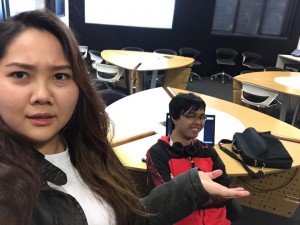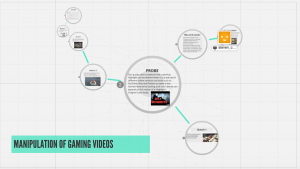This semester I got to work with several types of mediums all associated towards the genre of gaming. I do not know much about the gaming genre when I first started this project. All I knew about gaming, was that it has grown exponentially and recognised over recent years due to online video mediums such as YouTube.
Researching the gaming genre has brought up many interesting finds, such as Non-Player Characters, Walkthrough game videos, Playthrough game videos and Gaming montage to name a few. Reading the readings on narrative and new media I recognised a link between gaming and the concepts of non-narrative, narrative, variability etc. For example, walkthrough game videos have a linear narrative structure to it as they are in a sense a linearisation of video games who are non linear in structure. While montages have a non-narrative form, showcasing parts of interest and compiling it.
After Understanding the genre a little better, my group decided to explore the genre with a medium that was not traditional in the gaming world, Vines.
For Project 1, Steve and I combined our interest together by using Vines to record the gaming genre. The process proved to be more difficult than we thought as in Project 2 when we started experimenting with Vine and throughout the sketching process, we experimented with many variations of how we could go about recording the gaming genre. What I realised from my sketches, was that Vine, had a limitation of six seconds and it loops continuously. In one of my sketches, showed, even though the sketch had a narrative to it, but it was only because of the content of the video, we can’t do a ‘day in a life’ video with games as the narrative in games tends be isolated from or even work against the computer-game.
Feedback from Project 2 was to make our sketches more precise and more related to gaming as what we were doing for our sketches in Project 2 was just about daily activities and our audience could not comprehend the gaming element to it. Therefore, the start of project 3 we decided to stop heading in the direction of Vine videos and explore various types of mediums we could use for our potential prototype. At this point, we knew we wanted the structure of our prototype to short but not as limited as a Vine video. We wanted freedom to build a different type of online gaming video which we eventually came up with Gaming Highlights. What we established a gaming highlight should be was essentially a gaming Vine, but without the limitations of a Vine. We decided to expand on this concept of a gaming highlight across several mediums to try to create something different.
There was an ongoing issue throughout our sketching process was the copyright and classification issue brought up by Seth in regards to taking game footage that we didn’t create. Disclaimers were mentioned briefly in posts in case the issue poses a potential problem, fortunately however, it did not in our sketches and works.
As mentioned in the paragraph above, our concept for Project 3 has switch routes to the gaming highlight form. We explored using multiple mediums such as Vimeo, Youtube, Snapchat and Twitter to see how each platform varied. By the end of Project 3, we realised that just by manipulating the highlight we had a different video, similar to that of a walkthrough game video. What we aimed to achieve was to keep the video form to make it feel like a highlight but not your typical game highlights. Finally what we decided from Project 3 was to expand on this on one of my sketches of using gaming highlights within Twitter to create sort of a ‘gaming highlights feed’. Something like what 555’s example was but for games.
From my sketch we finally moved on to our Project 4 probe known as a gaming highlight.
You can see how much we’ve progress and how our practices had changed. From trying to combine gaming videos with a Vine to creating highlights and incorporating them into a social network to create a real-time collaborative community. Our highlights at this point had become much more distinct as opposed to previous videos and sketches such as this which was made to dawdle compare to our highlights now.
The issues I faced while working on our projects was hardware as I do not have the game nor the software to record them and depended heavily on my group mate on this aspect for example, in the middle of Project 4, Steve and I ran into a problem involving a computer virus which had corrupted all of the footage and was unusable. We were footage-less for a week or so but Steve managed to salvage some stuff and we worked on those we could. Another issue was the process of creating .gifs for the gaming highlights feed, i only had limited footage to work with as I cannot record footage myself and you only can do so much with the same footage without looking like a repetition of each gif. The scaling down issues faced while trying to record .gifs lies in the aspect of trying to compress large file data to only 3mb worth of footage. One way I went about this issue was to find already made gaming gifs and repost them with our hashtag. That it creates awareness for our prototype as well as saving the hassle on trying to scale down.
What i took out from this process was even though we had an idea of what we wanted in mind from the beginning, and because there really isn’t flexibility in gaming videos, we thought we could not work with much. But, with the constant feedback and help from our tutor and peers, we extraordinarily changed our approach. The insight gave us many different alternatives to work with be it through manipulating gaming videos to using different social mediums to create a network.
We’ve come a long way from Project 1 to our prototype and I’m glad we went with what we did for Project 4. Being able to expand the gaming genre and pushing boundaries, ultimately we explored alternative forms of video production and applying an imaginative approach to it.


